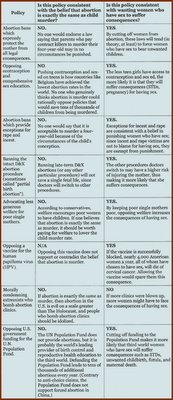After MDH’s post about Unfucking the Donkey, I knew I had to sit down and actually write the Healthcare thing.
Last summer I spent several weeks cooped up with Dilettante and he grilled me endlessly on healthcare. It was painful and tedious, but after three days of nothing but healthcare discussion, I think I had a decent solution to healthcare for all and good arguments as to why universal healthcare is good not just for people but for business too. It was actually from this (and a conversation a while back with MDH) that The White Papers was conceived.
This is a really long post- so it will be done in installments.
First- The Current Cost of Healthcare
We massively outspend countries with comparable standards of living on healthcare.
The latest numbers I can get are from the OECD report of 2003 using numbers from 2001 (the same numbers my political science textbook uses, by the way) and does not (obviously) include the increase in spending from the new Medicare prescription drug plan or inflation.
Of the 30 countries analyzed in the report, we spent the most at 13.9% of GDP on healthcare. The other top two were Switzerland (10.9) and Germany (10.7) but the average was 8.4%. If you look to the UK, they spend 7.3% and Mexico spends 5.6%.
If you look at the numbers for PPP (purchasing power parity- or the lumping of similar goods and services into one basket across different economic systems so that different systems can be examined together) Americans spend $4887 each to get the same types of care that Brits get for $1992 and Mexicans get for $586 (add that little number to your immigration debate). We spend more than twice the average of all the countries surveyed if you use PPP numbers.
All that spending and privatization hasn’t made us any healthier.
Let’s compare the UK and the US. We know that they spend about half of what we do on healthcare either by PPP or GDP. From that we would expect them to have worse health statistics (if the idea that spending more improves services is true). However they have slightly higher life expectancy rates (UK 80.6 years for women and 75.9 years for men compared to US 80 years for women and 74.6 years for men) and lower infant mortality rates (5 deaths per thousand for the UK, 7 for the US). Stats are from the UN Statistics Division
Switzerland and Germany are kicking our ass in the life expectancy and child mortality rates. Germany and Switzerland both have infant mortality rates of 4 per thousand).
Mexico doesn’t do as well. Their life expectancy is lower (72.4 for men and 77.4 for women) and child mortality is 21 deaths per thousand.
What all this shows is that we could certainly reduce the cost we spend on healthcare (though not to Mexico’s level) while maintaining or even improving life expectancy and child mortality.
All that spending, and 15.7% of the population is without healthcare. And that number is growing.
From the US Census of 2004, 45.8 million people in the US are without health insurance. That’s about 5.8 million more people without health insurance than in 2000 and 13.8 million more people than in 1988. But we spent $1.9 trillion on healthcare in 2004.
So some simple math:
If there are about 300 million people in the US and we spent $1.9 trillion covering everyone then the average healthcare payout would be about $6330 per person per year.
If you remove 46 million from the population for the people who aren’t covered then that spending increases to about $7451 per insured person per year.
Most people that did have insurance had it through private employers (58.9%) but those numbers are decreasing while numbers of people receiving health insurance through government programs (particularly Medicaid) are increasing.
If most of the population is insured by employers, hiring new employees is expensive and employers are looking to cut those costs
So it’s about $7500 to provide an employee health care on top of wages and taxes. Large employers are increasingly not offering healthcare (Wal-Mart) or requiring employees to shoulder a greater burden of the cost. They are also cutting plans that include insuring dependants and spouses, or promised benefits to retirees.
Small businesses (a large portion of the businesses in the US) either can’t offer health insurance because the cost is too high or can’t hire new employees and expand because they can’t pay for coverage on the new employees.
In the last recession, the biggest challenge to hiring new workers (and decreasing unemployment) was the cost of health benefits for new employees.
Next Time: What would universal healthcare look like in the US

